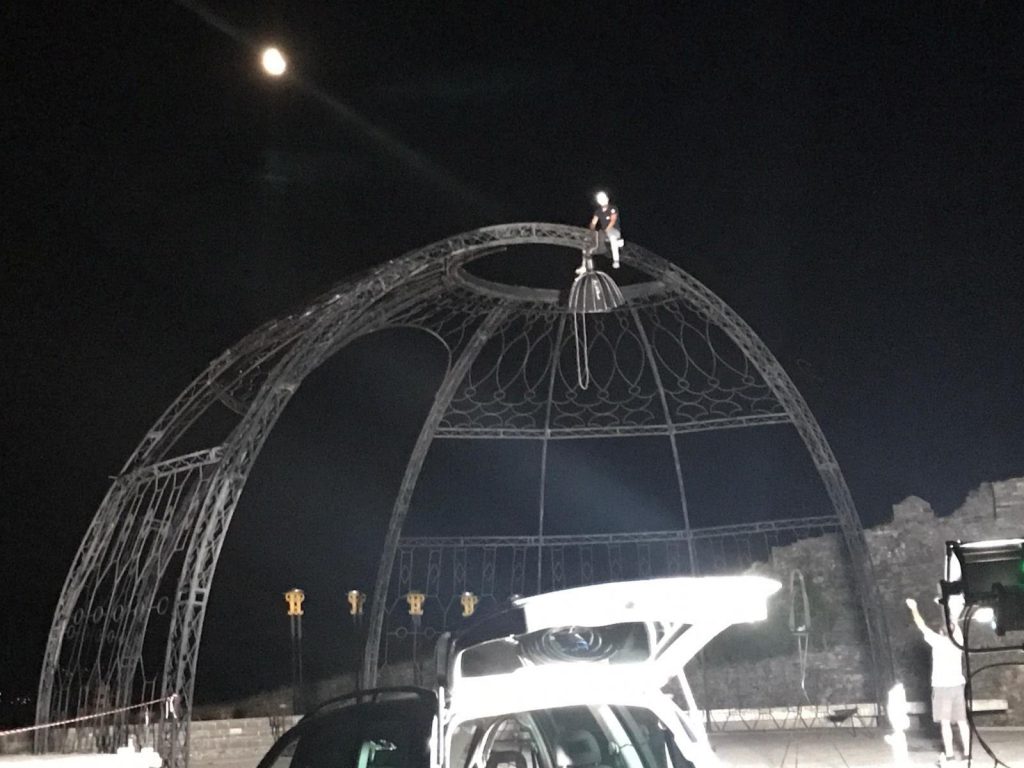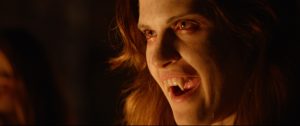
By Seager Dixon, Pioneer Media Production Coordinator
Simply put, the grips are the backbone of the production. They are tasked with not only controlling the natural and artificial light sources on set but also supporting any and all camera movements for the scene. Could that Arri fresnel use a bit of softening? Send for the grips. Is that pesky sun bursting through your East facing window when the scene is supposed to take place at night? Grab your duvetyne and send for the grips. Do you need to get your 400lb Fisher dolly up a third floor walk up because the locations department forgot to consult the property owner about access to a freight elevator? Stop by the craft services table, grab a donut, and send for the grips (all of them).
As you can see, without the grip department, the director of photography would be left to only work with available lighting and handheld camera movements. This may be okay for Dogme 95 rules, but for the vast majority of filmmakers, these limitations severely hinder the artistic process. Grips must control the creations of man and nature to perfectly paint the image on camera.
In order to be a great grip, you must have brains and brawn. They are creative problem solvers at their finest. The average person may look at a pile of clamps, rope, and fabric and see only the leftovers of a yard sale, but to a grip, these items are essential for the job. A solid grip rig is a combination of a child’s erector set and a sixteenth century galleon. Light stands, rails, frames, and clamps make up the structural support of the rig. Blocking out a light is easy but blocking out a light so that the camera’s wide shot doesn’t see the structure you’ve created is another story. Railing is often used for arms to go up and over the camera’s image so that the audience never gets to see how the sausage is made. Various fabrics are used to control the lighting as well. Thick black duvetyne is the go-to when stopping the rays of the sun or isolating the light from artificial sources. Various degrees of thin white fabric is also used to soften the light. The challenge is taking these tools and adapting to the location limitations. Sometimes you’re in a castle on top of mountain in Albania and the only rigging option is to utilize a giant steel arch standing over a ceremonial altar. Sometimes you don’t have a scissor lift or a cherry picker truck. Sometimes you just have to start climbing and bring the light up with a rope pulley. On Castle Freak, our grip and lighting team did exactly that. Impressive is an understatement.
After the lights are set, the camera movements come into play. Tripods, dollies, jibs, cranes, car mounts, motorcycle mounts, or whatever they used to strap a 35mm camera onto a bobsled for Cool Runnings are all used to give the camera a little or a lot of action to fuel the scene. Not only are these rigs used to ensure the safety of the camera but also the safety of the cast and crew. The last thing you need is a camera flying off a crane because someone forgot righty tighty, lefty loosey. Because of this, grips also act as on set safety experts. If a light is unbalanced grips will use sandbags to stabilize it. If that’s doesn’t work, grips will also utilize rope again for tie offs. And if that still isn’t enough, a grip will even dedicate themselves to holding and stabilizing the light, this is affectionately referred to as a “bloodbag.” On larger productions with larger grip and electric departments grips are able to specialize. On these larger crews you will typically see:
- Key Grip: the department head
- Best Boy: the Key’s right hand and typically in charge of crew booking and equipment rentals, as well as keeping track of the equipment during production.
- Company Grip: these are general grips who work under the guide of the key for rigging and camera movements
-Construction Grip: works alongside art department to remove, modify, and adjust portions of the set to facilitate camera and light moves.
-Dolly Grip: in charge of operating the dolly and the occasional crane.
A solid grip team is needed for any challenging production. So please, treat your grips nicely. They work the longest hours and have the most physically demanding responsibilities on set. It’s never good to have a disgruntled, tired, and beat up person on set who is responsible for rigging a 20 x 20 diffusion rail frame overhead your lead actors. Try to keep their hours limited by coming into the day with a clear and concise plan. Miscommunication can lead to a grip running around between sets wearing themselves out before a single light is placed. And it doesn’t hurt to keep your craft services top notch. Protein bars, nuts, beef jerky, and all of the water in the world will keep your grips moving between lunch breaks. If your craft services is lacking, a grip will be the first person to tell you!
A few tips for the trade:
- Always keep a tool kit with you on the truck. You’ll need wrenches, Allen keys, mallets, screw drivers, you name it every day on set. You don’t want to be caught lacking with a light stand starts acting up.
- Practice your knots. There are a million knots out there and they all can find a place on a film set. The classic shoe knot will simply not cut it.
- Always wear your gloves. Accidents will happen. Its better to be wearing your gloves, than having your skin be de-gloved.
- Stay on good terms with the art department, you’ll be surprised how often your departments overlap.



